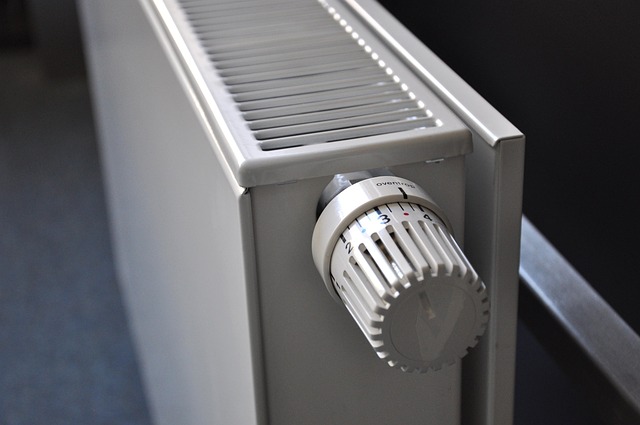Understanding Home Heating Solutions
Home heating systems vary in design, from furnaces and heat pumps to radiant setups. Each option works differently to regulate indoor temperature. Learning about energy sources, maintenance, and efficiency ratings can help guide decisions for seasonal comfort.

Home heating technology has evolved dramatically over the decades, offering homeowners more efficient, cost-effective, and environmentally friendly options than ever before. Whether you’re building a new home, replacing an aging system, or simply looking to improve your current heating setup, understanding the basics of how these systems work can save you money and ensure optimal comfort throughout the winter months. This comprehensive guide explores the various heating solutions available today, their advantages, maintenance requirements, and energy-saving potential.
Furnace Repair Tips and Heating System Basics
The heart of most North American homes’ heating systems is the furnace. These powerful units typically use natural gas, propane, oil, or electricity to generate heat that’s distributed throughout your home. Understanding how your furnace operates can help you identify when something isn’t working properly. Common furnace issues include dirty filters restricting airflow, ignition or pilot control problems, mechanical wear and tear, and thermostat malfunctions.
Regular maintenance is crucial for furnace longevity and efficiency. Homeowners should replace air filters every 1-3 months depending on use and indoor air quality factors. Annual professional inspections are recommended before winter to ensure all components are functioning correctly. Simple troubleshooting steps for non-functioning furnaces include checking the thermostat settings, ensuring the unit has power, inspecting circuit breakers, and examining the pilot light if applicable.
When your furnace requires repair, knowing when to call professionals versus attempting DIY fixes can save both money and prevent potential safety hazards. While filter changes and thermostat adjustments are suitable for most homeowners, any repairs involving gas lines, electrical components, or internal mechanical parts should be left to certified technicians.
Energy Efficient Heaters and Modern Home Options
Today’s heating technology offers remarkable improvements in energy efficiency compared to systems installed just a decade ago. High-efficiency furnaces now achieve AFUE (Annual Fuel Utilization Efficiency) ratings of 95-98%, meaning they convert nearly all their fuel into usable heat. Heat pumps have also gained popularity, particularly in moderate climates, as they can provide both heating and cooling while using significantly less energy than traditional systems.
Radiant floor heating represents another modern advancement, circulating warm water through special tubing beneath flooring to provide consistent, comfortable heat that rises naturally through the room. This system eliminates the drafts and temperature fluctuations common with forced-air systems and can operate using various energy sources including natural gas, propane, or electricity.
Smart thermostats have revolutionized home heating control, learning household patterns and adjusting temperatures automatically to maximize both comfort and efficiency. These devices can be controlled remotely via smartphone apps and integrate with other smart home systems, potentially reducing heating costs by 10-15% according to various studies.
Electric vs Gas Heating Explained for Homeowners
The choice between electric and gas heating systems represents one of the most significant decisions homeowners face when installing or replacing heating equipment. Each option comes with distinct advantages and considerations that extend beyond the initial installation cost.
Gas heating systems typically cost more to install but offer lower operating costs in most regions. Natural gas furnaces heat homes quickly and can reach higher temperatures than electric systems, making them particularly effective in colder climates. However, they require proper venting, regular safety inspections, and access to natural gas lines, which may not be available in all locations.
Electric heating systems—including baseboard heaters, electric furnaces, and heat pumps—generally cost less to install and require minimal maintenance. They produce no combustion gases, eliminating carbon monoxide concerns. However, their operating costs can be substantially higher in areas with expensive electricity rates. Heat pumps represent a middle ground, offering greater efficiency than traditional electric resistance heating while still using electricity as their energy source.
Home Insulation for Warmth and Energy Savings
Even the most efficient heating system will perform poorly in a poorly insulated home. Proper insulation acts as a thermal barrier, preventing heat from escaping during winter and keeping cool air inside during summer. The most critical areas for insulation include attics, exterior walls, floors above unheated spaces, and basements or crawl spaces.
Attic insulation provides the highest return on investment, as heat naturally rises and can quickly escape through an under-insulated roof. Depending on your climate zone, recommended R-values (insulation’s thermal resistance measurement) for attics range from R-30 to R-60. Wall insulation can be more challenging to install in existing homes but offers significant energy savings, especially in older properties built before modern insulation standards.
Beyond traditional insulation materials like fiberglass and cellulose, homeowners should also address air leakage through weatherstripping around doors and windows, sealing ductwork, and using caulk to close gaps around pipes and electrical penetrations. These relatively inexpensive measures can dramatically improve heating efficiency and comfort.
Winter Heating Guide and Comfort Improvement Ideas
Beyond your primary heating system, several supplementary strategies can enhance winter comfort while potentially reducing energy consumption. Zone heating—focusing warmth in occupied areas rather than heating the entire home uniformly—can be accomplished through programmable thermostats or supplemental heating sources like space heaters used judiciously in frequently occupied rooms.
Humidity control plays a surprising role in winter comfort. Dry winter air feels colder than humidified air at the same temperature. Adding a whole-home humidifier or portable units can allow you to feel comfortable at lower thermostat settings, potentially saving 5-10% on heating costs while preventing issues like dry skin and static electricity.
Strategic use of ceiling fans (running clockwise at low speed during winter) helps redistribute warm air that naturally collects near ceilings. Similarly, leaving interior doors open improves air circulation, preventing cold spots and reducing the workload on your heating system.
Heating System Cost Comparison and Options
When selecting a heating system, understanding the full cost picture—including installation, operating expenses, and maintenance—is essential for making informed decisions that align with your budget and comfort needs.
| Heating System Type | Average Installation Cost | Annual Operating Cost | Average Lifespan |
|---|---|---|---|
| Natural Gas Furnace | $2,500-$6,000 | $500-$800 | 15-20 years |
| Electric Furnace | $1,500-$3,000 | $900-$1,500 | 20-30 years |
| Heat Pump | $4,000-$8,000 | $700-$1,200 | 15 years |
| Boiler (Oil) | $3,500-$8,000 | $1,200-$2,000 | 15-20 years |
| Radiant Floor Heating | $6,000-$14,000 | $500-$700 | 20+ years |
Prices, rates, or cost estimates mentioned in this article are based on the latest available information but may change over time. Independent research is advised before making financial decisions.
The most cost-effective heating solution varies significantly based on local climate, energy prices, home size, and insulation quality. In areas with moderate winters and high electricity costs, heat pumps often provide the best long-term value. For colder regions with access to natural gas, high-efficiency gas furnaces typically offer the lowest operating costs despite higher initial investment.
Homeowners should also consider potential rebates and incentives when evaluating heating options. Many utility companies and government programs offer substantial financial incentives for installing energy-efficient systems, sometimes covering 10-30% of installation costs.
Understanding your home’s heating system is a fundamental aspect of homeownership that impacts both comfort and budget. By evaluating your specific needs, local climate conditions, and available energy sources, you can select and maintain a heating solution that provides reliable warmth while optimizing energy efficiency. Whether upgrading an existing system or installing new equipment, investing time in research and professional consultation will lead to more informed decisions and greater satisfaction with your home’s heating performance.




